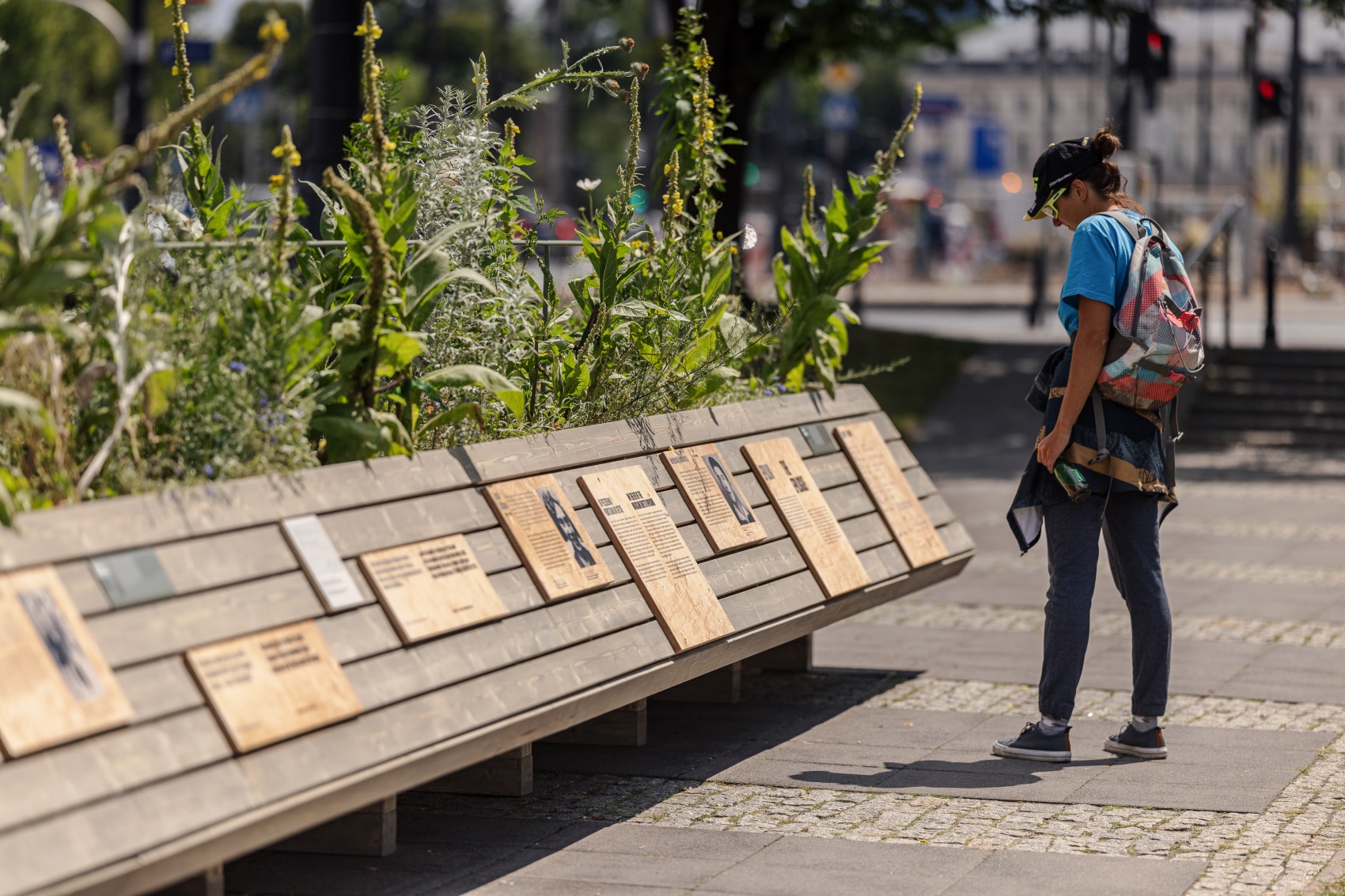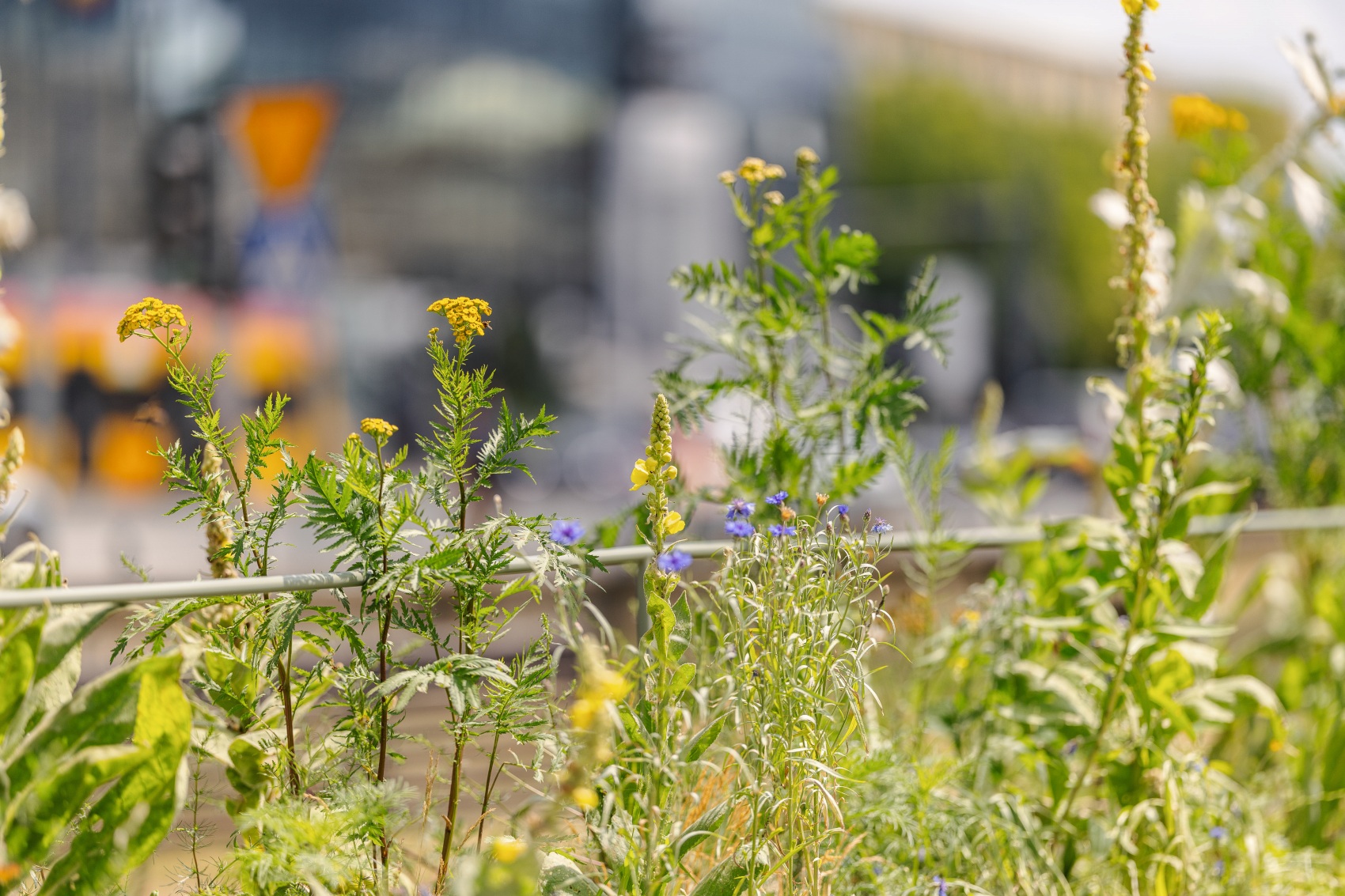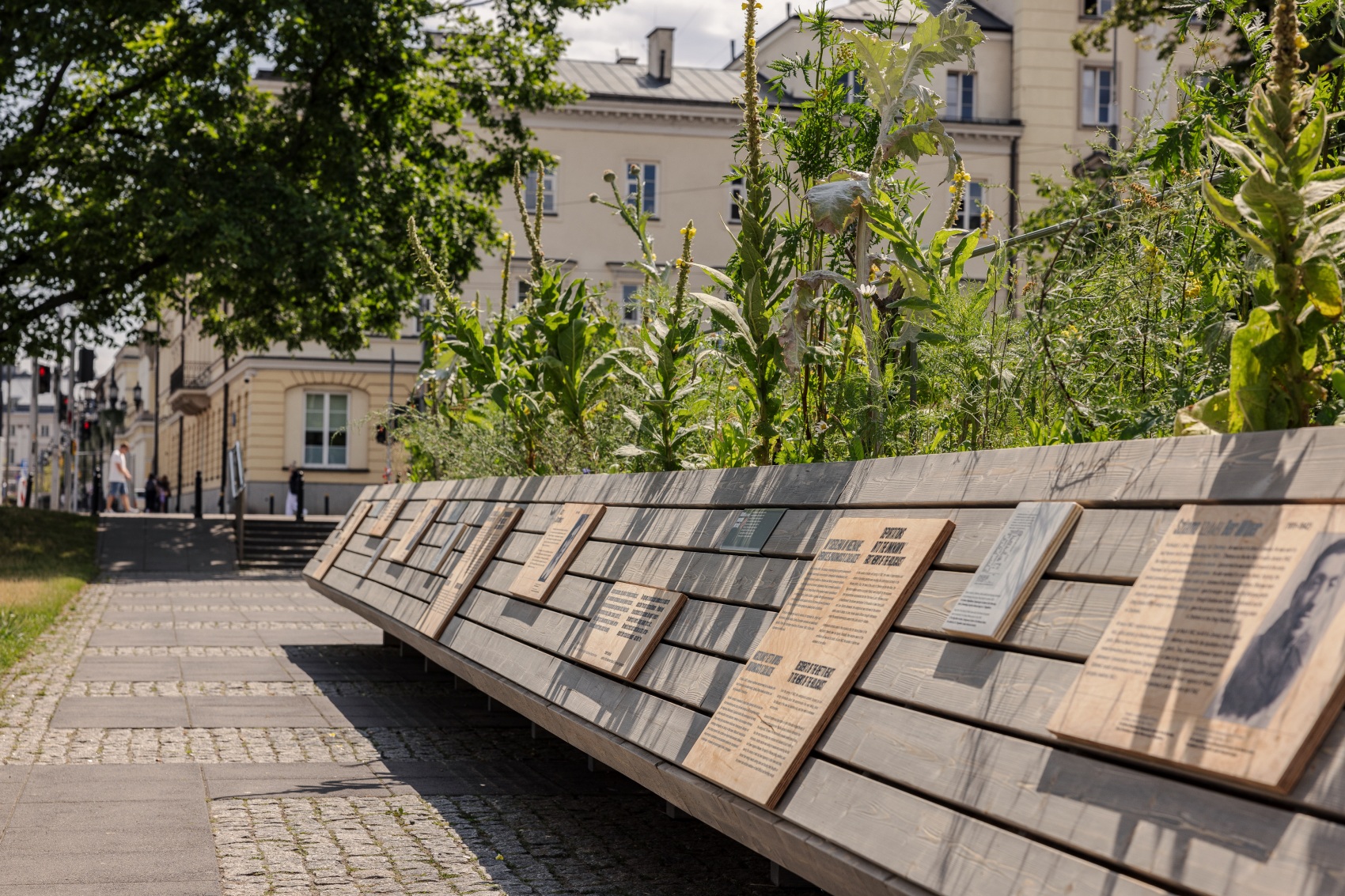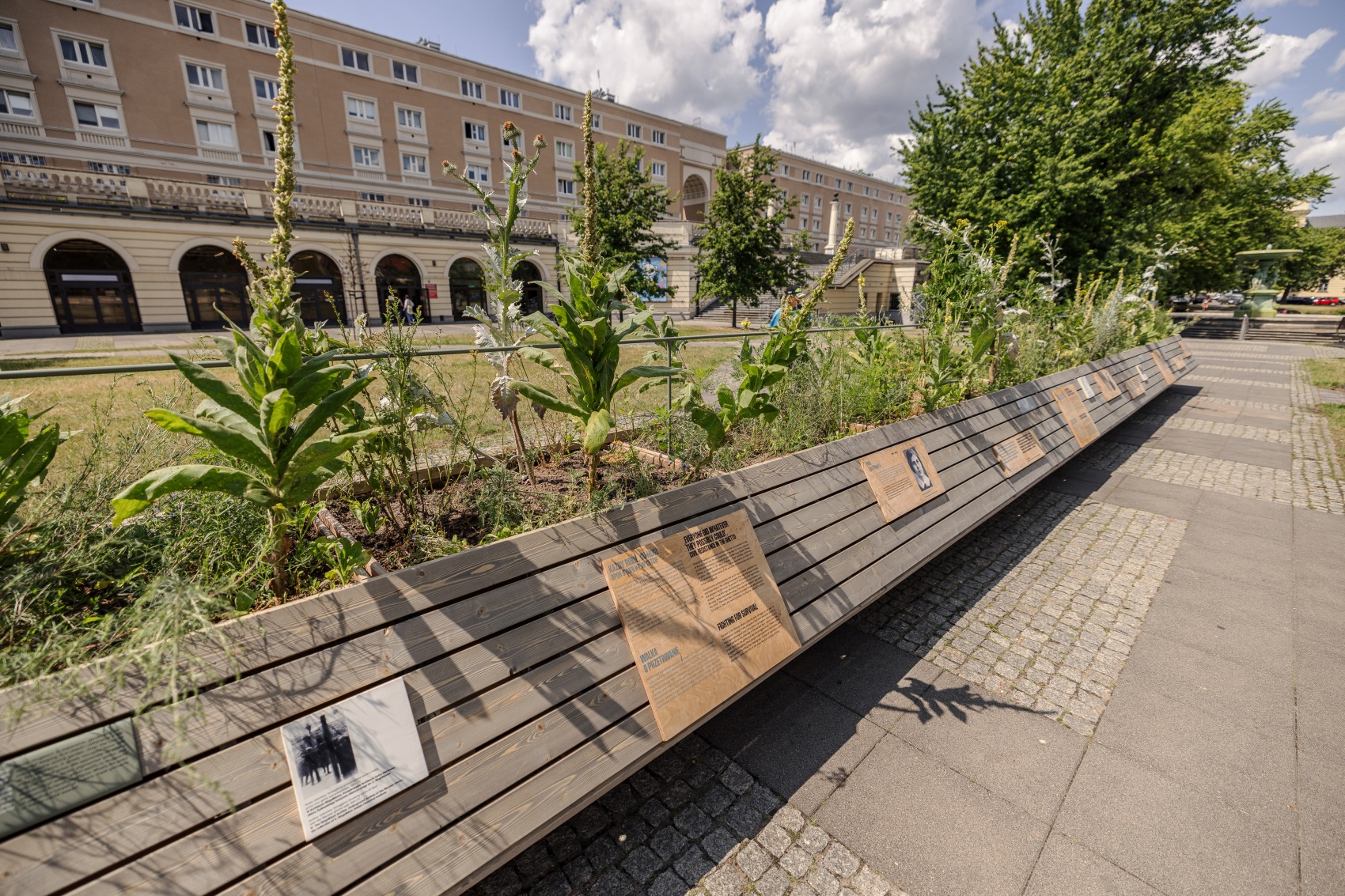The exhibition ‘Roots of the Uprising. Resistance in the Warsaw Ghetto’ is open to the public until 21 September. It is free of charge, all you have to do is go to the square of the Home Army Scout Battalion “Wigry”, which is located right next to the “Muranów” cinema. The heroes of the exhibition are Shlama Bar Winer, Shmuel Bresław, Tosia Altman, Józef Lewartowski, Emanuel Ringelblum, Margalit Landau and Róża Symchowicz. The exhibition accompanies this year’s March of Remembrance. The stories of the heroes bear witness to the fact that resistance in the Warsaw Ghetto lasted almost from the very beginning. The plants used in the exhibition are also its symbols. The same species grew on the ruins of the ghetto almost 80 years ago
The outdoor exhibition is an integral part of the March of Remembrance. When participants walk the entire route and reach the exhibition site, it is at the same time its ceremonial inauguration. This year, at the square of the Home Army Scout Battalion “Wigry” (in front of the Muranów Cinema), one can learn about the history of the beginnings of the resistance of the ghetto inhabitants, as well as the power of nature’s defiance, which did not let itself be overcome by the rubble into which the occupier turned the Northern Quarter
This year’s March of Remembrance and the splendid outdoor exhibition that accompanies it allow participants and spectators to delve – through the medium of greenery – almost literally, into the most secret layers of Warsaw, our city, which was so painfully affected by the German occupation during the Second World War. Plants are always a symbol of rebirth and hope. In the year of the 80th anniversary of the Warsaw Ghetto Uprising, we want to emphasise and remind that the heroic uprising of the Jewish community, which was preceded by daily struggles for dignity, was long and carefully prepared,”says the Director ofthe JewishHistorical Institute Monika Krawczyk
The Centrala Group has given the exhibition a unique shape: it is a wooden table-vault around which photographs and texts have been arranged, telling the story of the daily struggle for survival that the ghetto inhabitants had to wage and the roots of their resistance. The creators of the exhibition introduce the profiles of figures whose stories prove this in a special way. We tell the story of, among others, the scientist and social activist Emanuel Ringelblum, founder of the Oneg Shabbat group and patron of the Jewish Historical Institute, the educator Roza Symchowicz, who devoted her life to the education of Jewish children, Shlama Bel Winer, the author of accounts from the Chelmno camp, or Tosi Altman – an activist in the Ha-Szomer ha-Cair movement, who acquired weapons for the Jewish Combat Organisation and later fought in the uprising
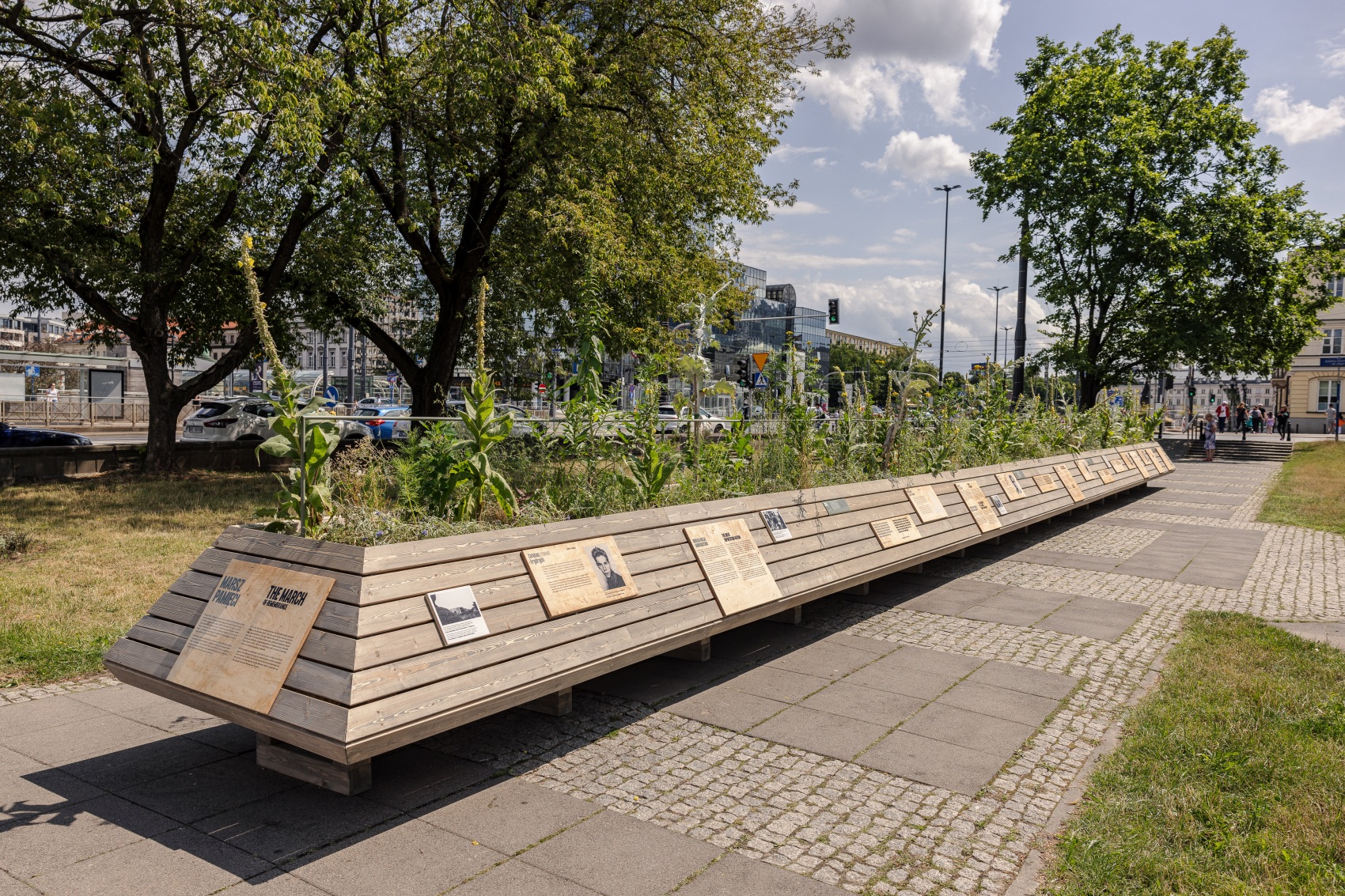
The story of the civilian heroes and heroines of the Warsaw Ghetto is intertwined with the story of the power of nature, written down by botanist Roman Kobendza just after the war. As an employee of the Capital Reconstruction Bureau, he researched and described the greenery reborn in the extremely adverse conditions of the ghetto ruins. Plants were re-grown by the landscape architect Natalia Budnik: these included the small-flowered mullein (a close relative of this plant became the inspiration for the shape of the menorah) or thedouble-feathered cosmos, which greeted those returning to the capital after the war, for which it received the graceful name ‘Warszawianka’
The “garden-exhibition” thus conceived encourages reflection on the roots of the April Uprising, on the 80th anniversary of its outbreak, showing how the activities of the resistance movement in the ghetto changed, from educational and aid activities – to concepts of armed struggle
The exhibition is accompanied by an extensive programme of events, available at www.jhi.pl
“Roots of the Uprising. Resistance in the Warsaw Ghetto” – outdoor exhibition
21.07-21.09.2023, square of the Home Army Scout Battalion “Wigry” (next to “Muranów” cinema)
Director of the Jewish Historical Institute: Monika Krawczyk
curators: Dr. Maria Ferenc (Jewish Historical Institute) and Franciszek Bojańczyk (Jewish Historical Institute)
architectural concept: Małgorzata Kuciewicz and Simone De Iacobis (Grupa Centrala)
landscape design: Natalia Budnik, cooperation Adam Kapler
graphic design: bisoñ studio
translation: Zofia Sochańska
PS we also recommend the article by our editor Mateusz Markowski, who collected archival photos of the ghetto and juxtaposed them with contemporary photographs. You can find the article with BEFORE and AFTER photos by clicking HERE
source: Emanuel Ringelblum Jewish Historical Institute
Read also: Warsaw | History | City | Events | whiteMAD on Instagram

